Are you struggling to understand the unique needs of your Samurai betta fish? Curious about what sets them apart from other betta variants?
In this post, Blog Auquarium will guide you through everything from their captivating physical traits to their specific care requirements, and even delve into the fascinating realm of Black Samurai betta breeding.
Samurai Betta Fish Facts & Overview
| Common Names | Samurai Betta |
| Scientific Name | Betta splendens |
| Adult Size | 2.5 inches (6.4 cm) |
| Lifespan | 2-4 years |
| Family | Osphronemidae |
| Origin | Thailand |
| Temperament | Aggressive |
| Compatibility | Best kept alone |
| Tank Mates | None or careful selection |
| Minimum Tank Size | 5 gallons |
| Diet | Carnivorous |
| Prey | Insects, small organisms |
| Habitat | Still waters, rice paddies |
| Color | Various, often vibrant |
| Skin Type | Scales |
| Care Level | Moderate |
| Breeding | Complex, bubble nest builder |
| pH Level | 6.0 – 7.5 |
| Water Hardness | Soft to medium |
| Temperature | 75 – 80°F (24 – 27°C) |
| Favorite Food | Live or frozen insects |
Why Samurai Betta Fish?
Have you ever marveled at the stunning blend of art and nature? That’s precisely what the Samurai Betta fish embodies. Originating from an unexpected mutation, the Samurai Betta fish dazzles aquarists with its distinct color patterns. These patterns are what make this species so extraordinary and sought after.
Pitchet, who is credited with naming the species, likened the betta’s appearance to the iconic Samurai warrior. Just as a warrior dons a metal helmet, the Samurai Betta too possesses a vibrant, metallic hue on its head. This captivating sheen, combined with its spirited personality, epitomizes the essence of a fighter.
But the true elegance of the Samurai Betta lies in its body. For a genuine Samurai Betta, the body should exude a non-iridescent quality, creating a striking contrast with its metallic head. Achieving this pristine pattern is no small feat. Breeding a Samurai Betta with this flawless distinction is rare, making it a challenging and rewarding endeavor for dedicated fish enthusiasts.
For those who deeply appreciate both the aesthetic beauty and the innate resilience of fish, the Samurai Betta offers a mesmerizing blend of both. Its presence in your aquarium not only elevates the visual appeal of your living space but can also serve as a tranquil, living testament to nature’s unexpected wonders.
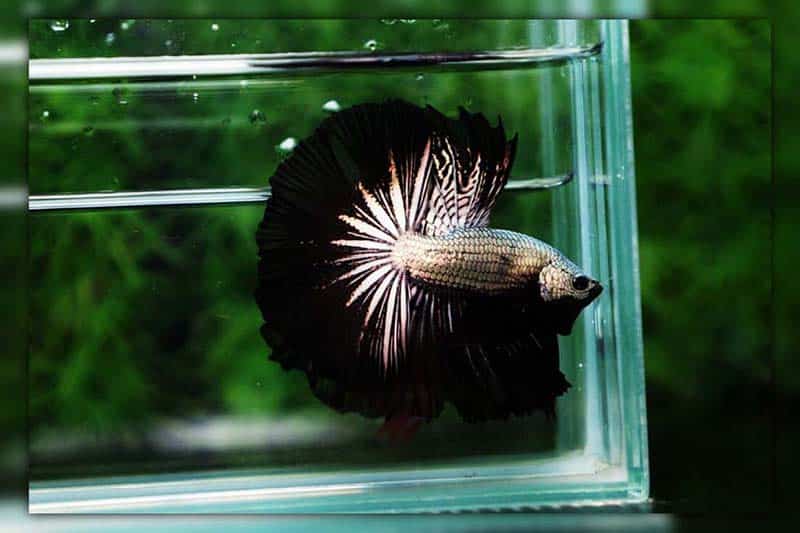
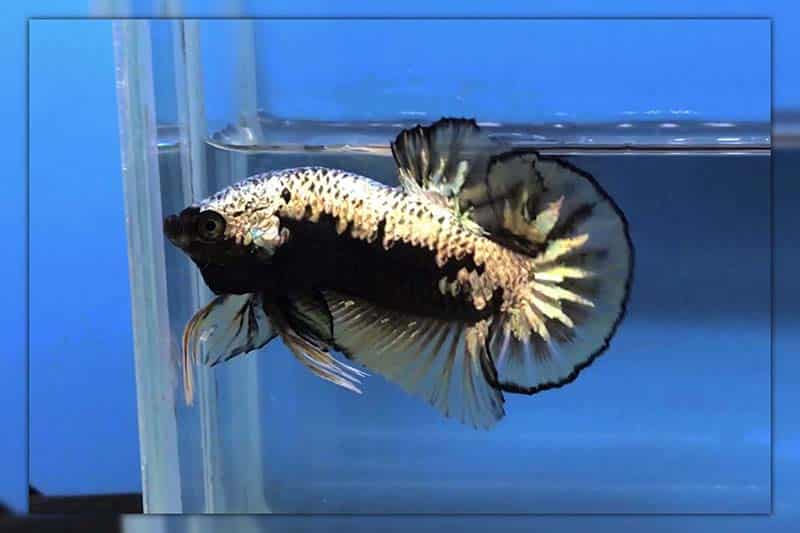
Typical Behavior
Samurai Betta fish are known for their spirited and captivating demeanor. Like other betta species, they are solitary creatures that prefer to have their own space. They are often seen patrolling their territories and can exhibit territorial behaviors, especially when they spot another betta. Flaring of fins and posturing can be expected when they feel threatened or challenged.
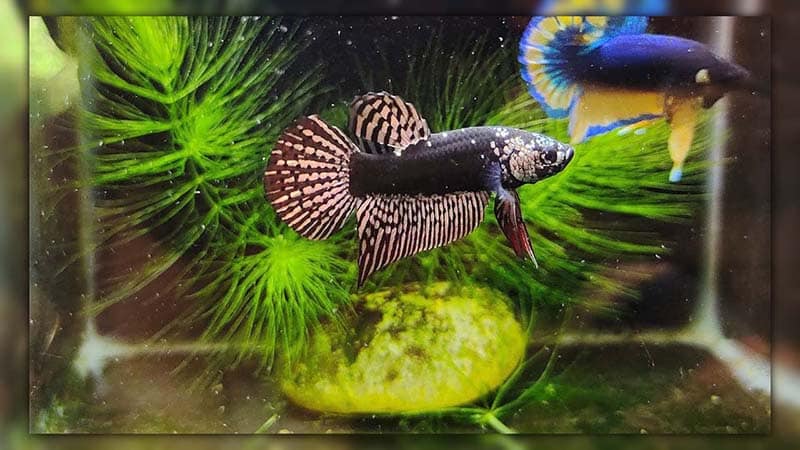
The Most Popular Samurai Betta?
The Samurai Betta, though unique in its patterns, comes in an array of colors. Each hue adds its own distinct touch to an aquarium, ensuring that enthusiasts can choose a betta fish colors that resonates with them.
1. Black Samurai Betta Fish
This variety is a sight to behold. The deep, inky black hue juxtaposed with its non-iridescent body creates a captivating contrast, making it a favorite for those seeking a dramatic touch to their aquatic environment.
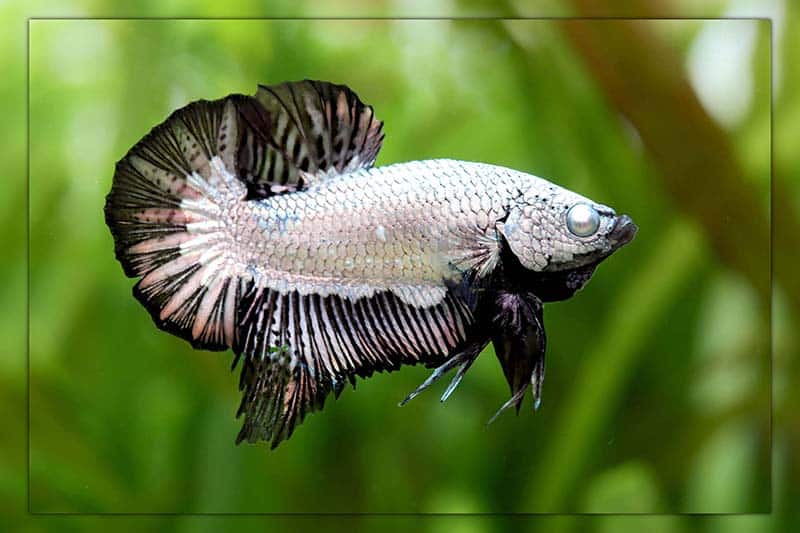
2. Blue Samurai Betta
Reflecting the shades of the ocean, the Blue Samurai Betta exudes calm and serenity. Its vivid blue metallic head paired with a contrasting body offers a refreshing aquatic aesthetic.
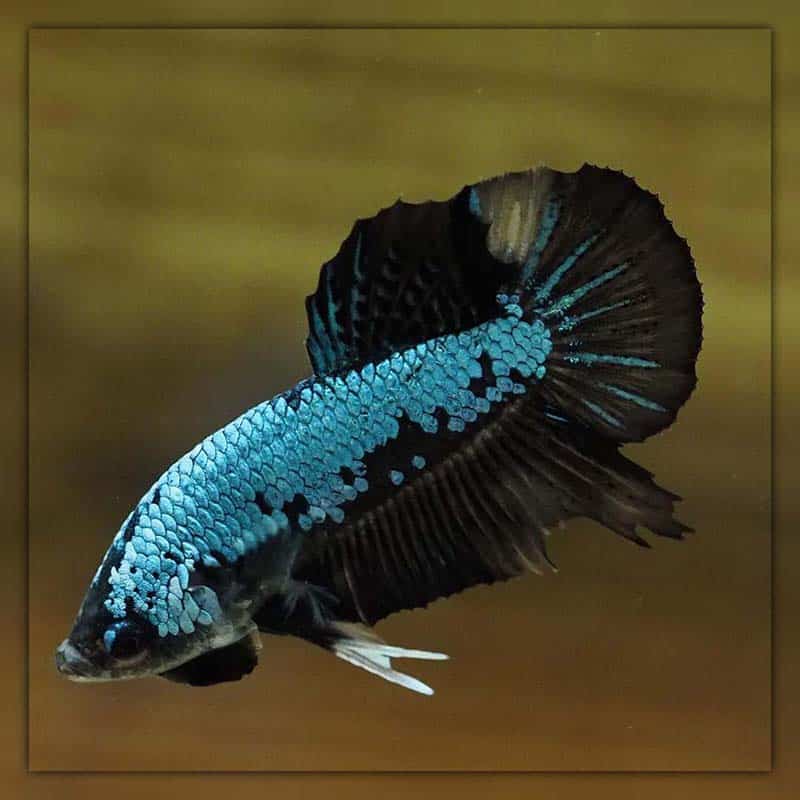
3. Green Samurai Betta
A rare gem in the aquatic world, the Green Samurai Betta seems to encapsulate the essence of lush aquatic vegetation. This variant, with its metallic green head, provides a natural, earthy look to an aquarium.
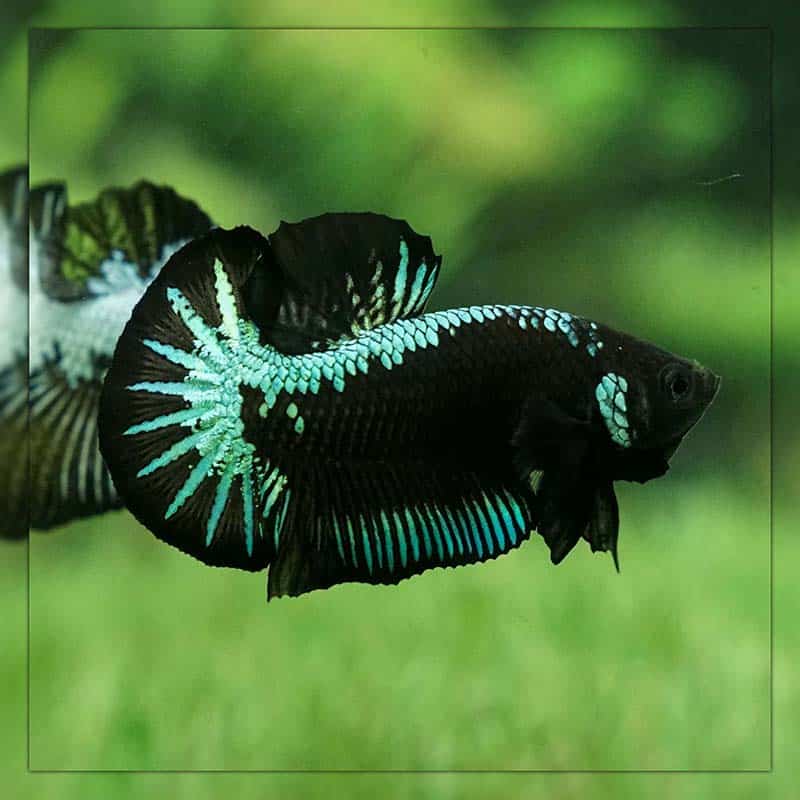
4. Red Samurai Betta Fish
Symbolizing passion and vigor, the Red Samurai Betta stands out with its fiery metallic head. This radiant fish injects warmth and vibrancy into any fish tank it inhabits.
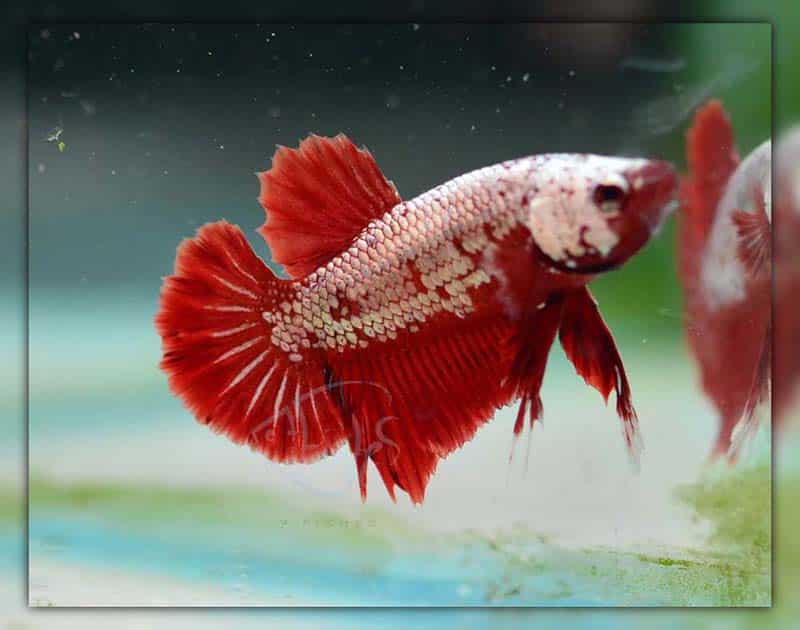
5. Yellow Samurai Betta
Radiating sunshine and joy, the Yellow Samurai Betta is for those seeking a cheerful addition to their aquatic collection. Its sun-kissed metallic head alongside its non-iridescent body is reminiscent of a sunny day by the waters.
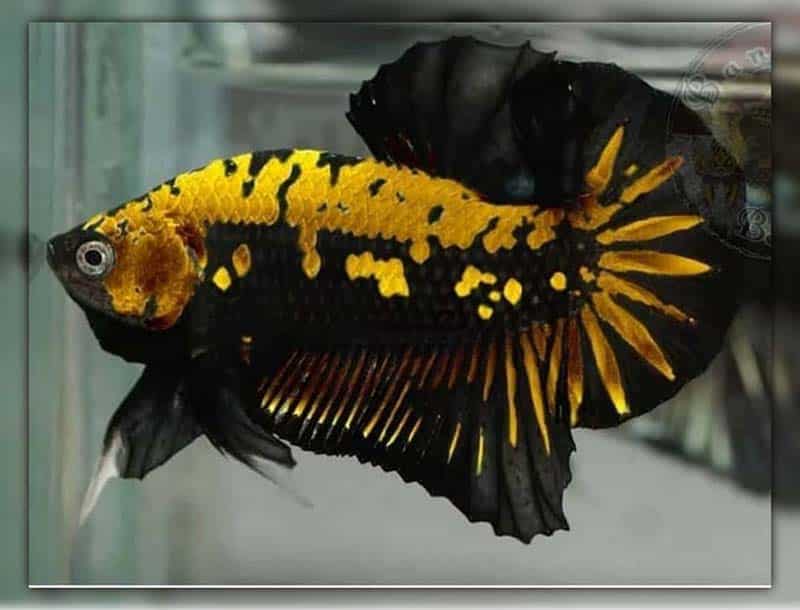
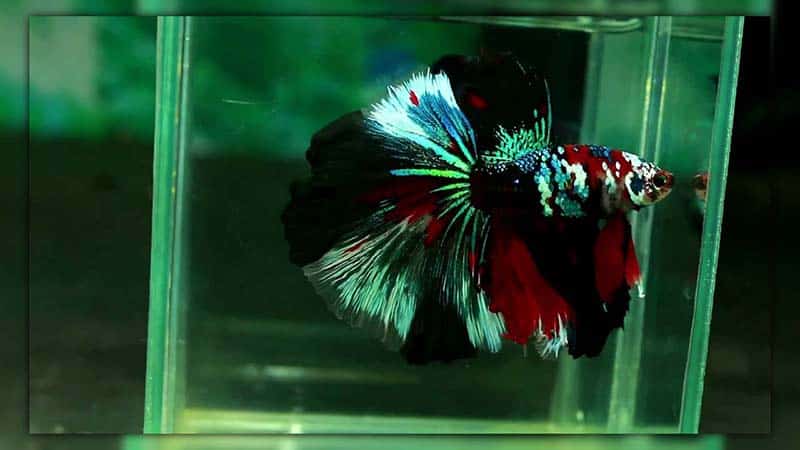
Difference Between Black Mamba and Black Samurai Betta

Black Mamba and Black Samurai are two different kinds of betta fish. They look quite different and come from different places.
The Black Mamba Betta is a type of Siamese Fighting Fish. It’s mostly black but has shiny green or blue scales. It’s known for its long, flowing fins and can be quite aggressive, which makes it a favorite among aquarium enthusiasts. This betta gets its name from the African snake, the black mamba, because of its sleek black appearance.
On the other hand, the Black Samurai Betta is a type of Halfmoon Betta. It’s also mostly black but with a red or maroon tint. These bettas have big, flowing fins that look like a samurai warrior’s sword. People who breed bettas really like them because they look so striking and have a unique color.
The main differences between Black Mamba and Black Samurai Bettas are how they look and where they come from. While both are mostly black, Black Mamba Bettas have shiny green or blue scales and long, flowing fins, while Black Samurai Bettas have a red or maroon tint and big, flowing fins that resemble a samurai sword.
Samurai Betta Fish Care & Breeding
Taking care of a Samurai Betta fish goes beyond merely feeding it and maintaining water cleanliness; it’s about creating an environment where the fish can thrive physically and mentally. These bettas, known for their vivid colors and stunning fin formations, require specific water conditions and dietary needs.
- Samurai Bettas prefer soft to moderately hard water with a pH range of 6.5-7.5. A stable temperature of around 76-80°F (24-27°C) is crucial for their well-being. Consider using a heater and thermometer to maintain consistent water conditions.
- A diet of high-quality pellets, along with occasional treats like brine shrimp or bloodworms, can ensure optimal health and coloration.
- A tank of at least 5 gallons with a gentle filtration system is recommended. Decorations such as caves and plants can provide hiding spots, reducing stress and enhancing their living experience.
- Pay attention to signs of illness like lethargy, discolored scales, or erratic swimming patterns. Immediate attention and treatment are crucial for their longevity.
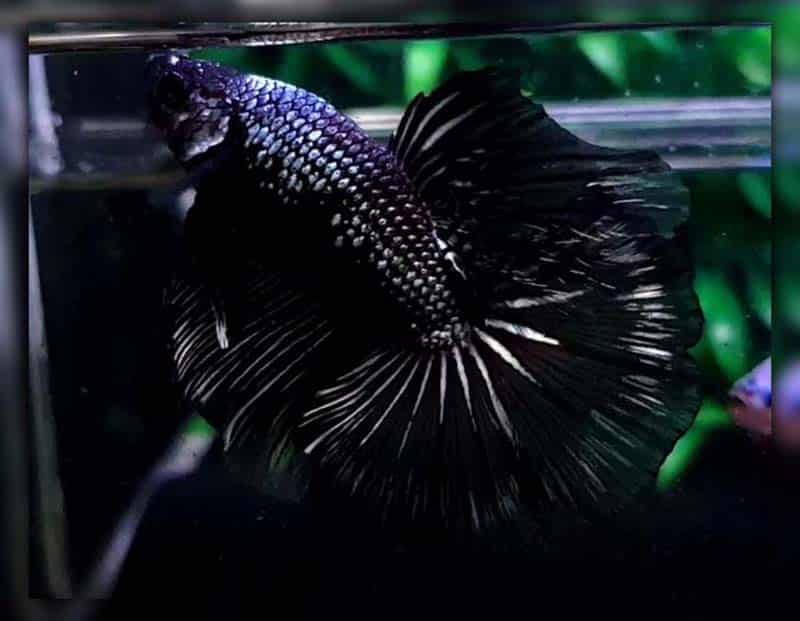
Breeding Black Samurai Bettas is an exciting but delicate process that requires keen observation and a thorough understanding of the fish’s behavior and needs.
- Firstly, make sure both male and female samurai bettas are healthy and in prime breeding condition. Females should be plump with visible egg stripes, and males should be displaying active behavior and vivid colors.
- A separate 10-gallon tank with softer water and a slightly raised temperature can help trigger the breeding process. Also, include a breeding site like a bubble nest or a leaf for the male to prepare a nesting area.
- Once the male has built the nest and the female shows interest by swimming nearby and displaying her egg stripes, you can introduce them. The male will embrace the female to fertilize the eggs, which she’ll later place in the nest.
- After the eggs are secure, remove the female from the tank to prevent potential aggression from the male. Keep an eye on the nest and be prepared for the fry to hatch, usually within 24-48 hours.
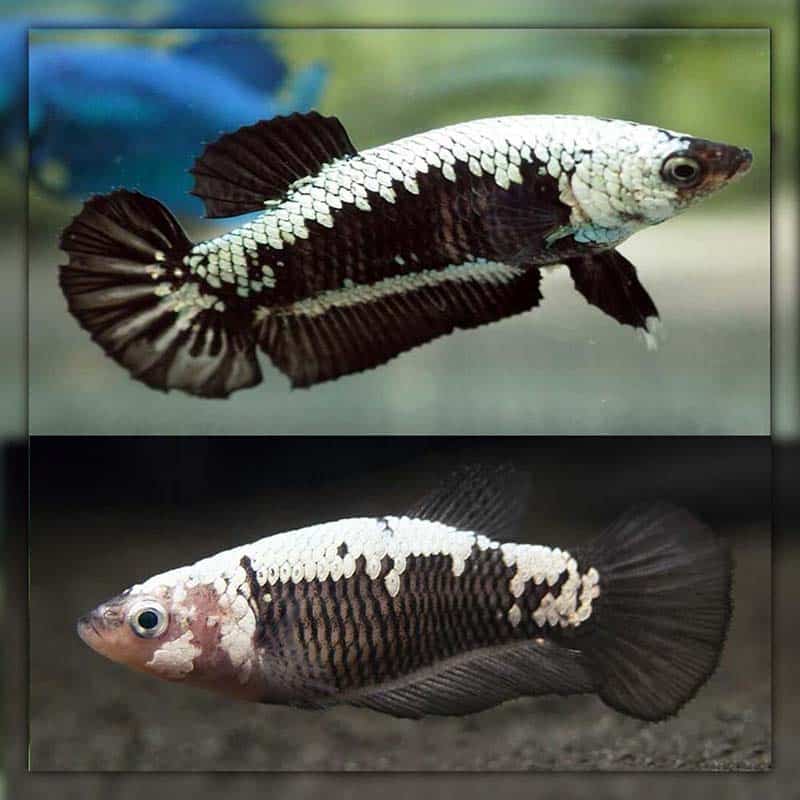
Conclusion
The Samurai Betta fish are not just visually captivating they bring a unique blend of challenges and rewards to your aquarium. Proper care, from the right water parameters to a balanced diet and appropriate tank environment, can help these aquatic jewels live healthier, happier lives. Breeding them not only extends your aquatic family but also offers a deeper insight into their fascinating world.




